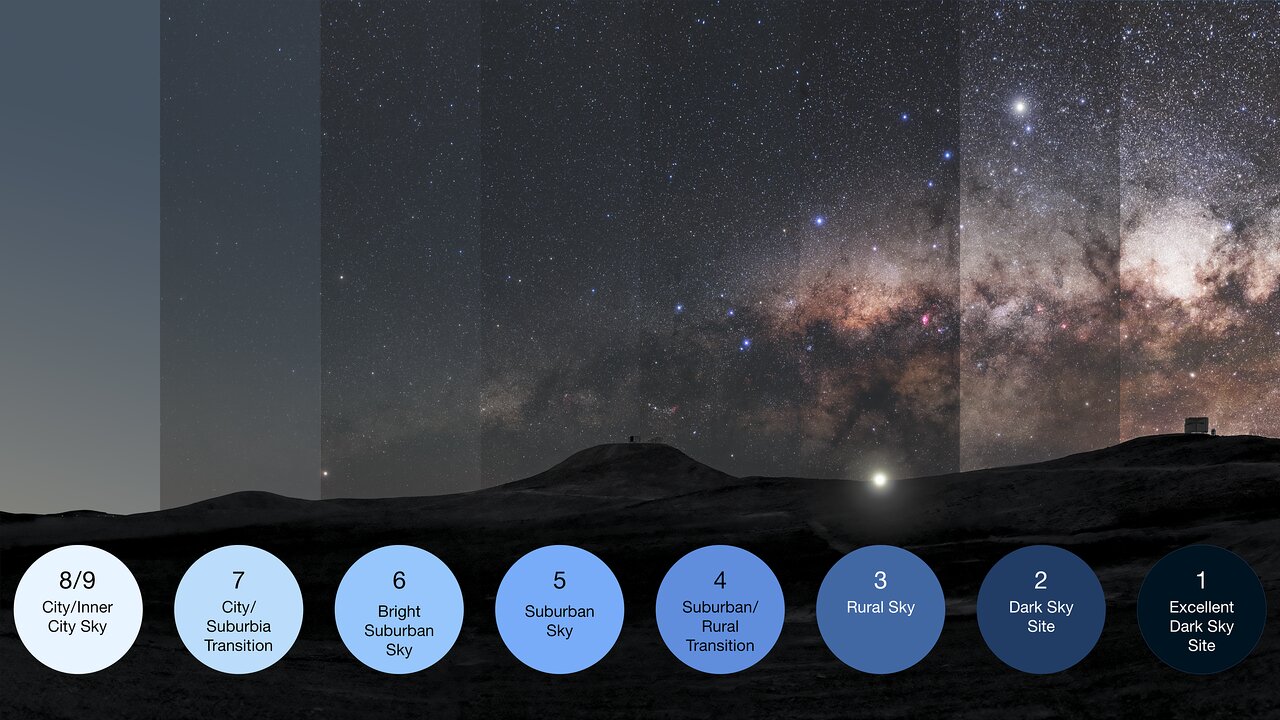Visibility
Bortle Dark-Sky Scale
It is a nine-level numeric scale that measures the night sky’s and the stars’ brightness (naked-eye and stellar limiting magnitude) of a particular location. It quantifies the observability of celestial objects and the interference caused by light pollution and sky glow.
John E. Bortle created the scale to help amateur astronomers compare the darkness of observing sites. The scale ranges from class 1, the darkest skies available on Earth, through class 9, inner-sky cities. The following image shows the Bortle classes and illustrates the relation it has to the visibility of celestial objects in the night sky. (Credits: European Southern Observatory)

IIT Kanpur lies in Bortle class 6. The darkest skies in India are in Ladakh, which is Bortle class 2, where the Indian Astronomical Observatory, Hanle and India’s first Dark Sky Reserve is located. The lowest Bortle class in the world is 1, which is found in Antarctica. You can use the Light Pollution Map Info to find the Bortle class of any location on Earth.
Light Pollution
Astronomy is extremely sensitive to light pollution. Some of the most important factors that affect the visibility of celestial objects are:
-
Urban: Skyglow, i.e., the scattering of light in the atmosphere at night, reduces the contrast between stars and galaxies and the sky itself, making it much harder to see fainter objects. This is the reason that most of the amateur astronomers go to and observatories are located far from urban areas.
-
Lunar: The moon is the brightest object in the night sky, especially on a full moon. It can be so bright that it can wash out the entire sky, making it impossible to see fainter objects. Hence, it is usually recommended to observe the night sky during the new moon, unless you are observing the moon itself.
-
Climate: Climate is also one of the key factors affecting night sky observation, For example, during winters, fog or smog may hamper your observations or during cloudy weather, the entirety of the sky may be covered. On the flip side, just after rainfall, the sky is usually extremely clear and ideal for observations and astrophotography.